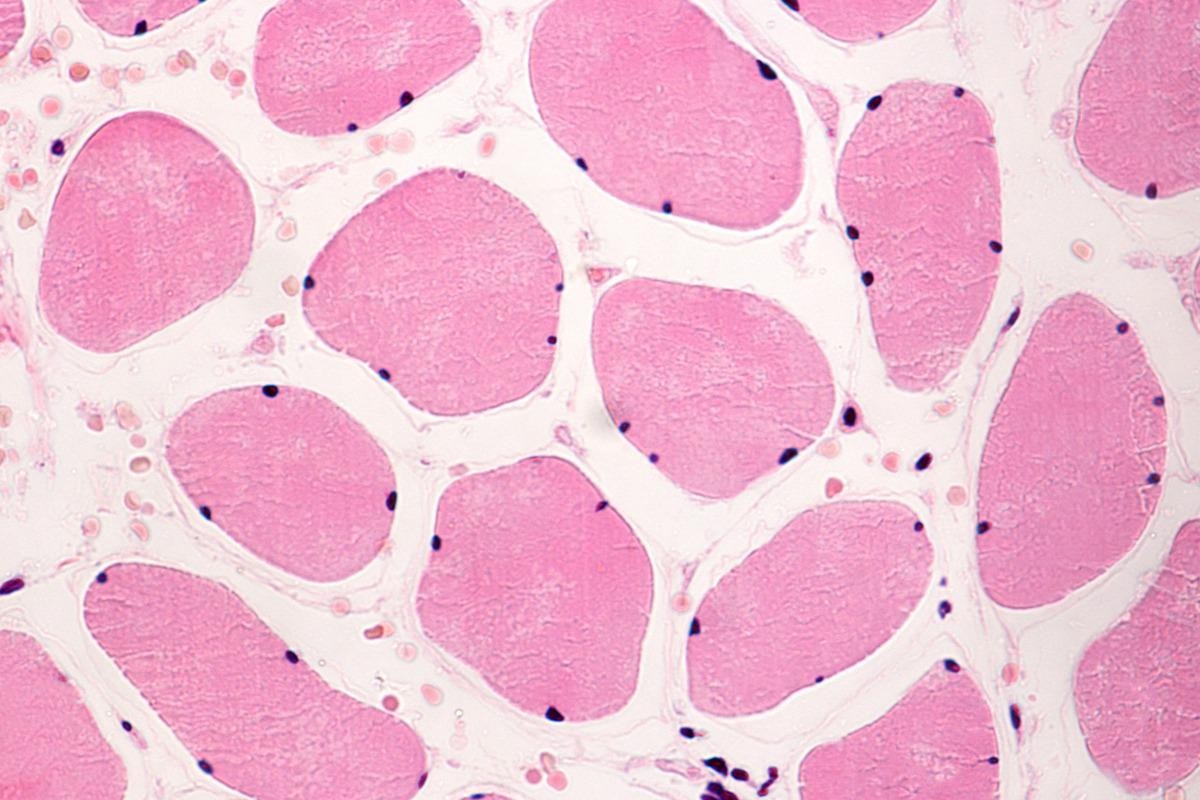The hallmark features of the 2019 novel coronavirus disease (COVID-19), caused by severe acute respiratory syndrome coronavirus 2 (SARS-CoV-2), are systemic pneumonia and acute respiratory distress syndrome. Obesity and other comorbidities have been associated with poor clinical outcomes in COVID-19 patients.
 Study: Impact Of Sarcopenia In SARS-CoV-2 patients during two different epidemic waves. Image Credit: Jose Luis Calvo/Shutterstock
Study: Impact Of Sarcopenia In SARS-CoV-2 patients during two different epidemic waves. Image Credit: Jose Luis Calvo/Shutterstock
The present study recently published as a pre-proof in the journal Clinical Nutrition ESPEN attempts to investigate if sarcopenia, which is a condition where there is loss of skeletal muscle mass and function, may result in poor clinical outcomes in COVID-19 patients.
Sarcopenia, steatosis and COVID-19
Sarcopenia is a condition predominantly associated with old age. However, younger adults can also develop this condition. When aging is solely responsible for sarcopenia, it is classified as primary sarcopenia, while secondary sarcopenia is caused by one or more factors. Some of the factors contributing to secondary sarcopenia include bed rest, sedentary lifestyle, inflammatory diseases, organ failure, malignancy, or inadequate nutrition.
Old age and chronic diseases considered to be causative factors of sarcopenia have also been identified as risk factors for poor outcomes in COVID-19. Earlier studies suggest that patients suffering from sarcopenia have poor respiratory muscle strength and function, complicating their recovery from pneumonia and acute respiratory distress syndrome.
From this evidence, the scientists in the present study hypothesized that sarcopenia might negatively impact recovery in COVID-19 patients. Additionally, the reduced physical activity and inadequate protein consumption that may be associated with physical isolation linked with COVID-19 may increase the risk of sarcopenia.
There are earlier reports associating sarcopenia with steatosis. Steatosis is the abnormal buildup of fat in cells or organs, and it commonly occurs in the liver when the condition is called hepatic steatosis.
Patient characteristics
The present study included 272 COVID-19 patients treated in the University Hospital of Modena between February 2020 and January 2021. The median age of the study population was 71 years, with a mean length of hospital stay at 26.7+/- 21.1 days. 62.9% of the study population were males. Hypertension was observed to be the most common comorbidity observed in 59% of the study population.
How was sarcopenia diagnosed in the present study?
Measurement of the skeletal muscle cross-sectional area and index at the third lumbar (L3) vertebra is considered the gold standard for evaluating muscle mass. In instances where L3 is not available, earlier reports suggest that skeletal muscle area (SMA) assessment at the 12th thoracic vertebra (T12) level facilitates the diagnosis of sarcopenia. It can further be used to identify associations between sarcopenia and outcome parameters in patients who have undergone chest CT scans. The present study employed CT findings of 12th vertebra skeletal muscle cross-sectional areas (T12 SMA) to diagnose sarcopenia.
Sarcopenia identified as a risk factor for adverse clinical outcomes in COVID-19 patients during the first wave
The prevalence of sarcopenia was 41.5%, and steatosis was 66.9%, with a mean SMA of 89.1 cm2 +/- 34.4. During the first pandemic wave between February 2020 to May 2020, the prevalence rate of sarcopenia was 57.9%. During the second wave between September 2020 and January 2021, it was 21.6%. The prevalence rate of sarcopenia was found to differ between the first and second waves of the pandemic. Notably, the prevalence rate of steatosis was similar during both waves at around 73%. Further, in the case of both genders, the distribution of SMA values differed between the first and second waves, and a greater dispersion was observed during the second wave.
The percentage of mortality was observed to be different in the first and second waves and was estimated to be 14.8% in the first wave and 26.5% in the second wave. Additionally, the mean albumin concentration was also different between the two groups. The other clinical characteristics were balanced in patients from the first and second waves.
Among the sub-group of COVID-19 patients with sarcopenia, the prevalence of hepatic steatosis was different between the first and the second wave, with the values estimated to be 69.7% and 48%, respectively. This indicates a higher incidence of hepatic steatosis in COVID-19 patients with sarcopenia during the first wave.
The mean albumin concentration and mean PCR was additionally found to differ between the group of COVID-19 patients belonging to the first and second wave.
Multivariate analysis performed by the scientists in the present study indicated sarcopenia as the only independent prognostic factor for adverse clinical outcomes during the first wave after adjusting for confounding factors such as age, gender, and comorbidities. However, no correlation was identified between clinical outcomes and the incidence of steatosis or sarcopenia during the second wave.
The scientists did not find any significant differences when lung CT scans of COVID-19 patients with and without sarcopenia were compared during the first and second waves. The predominant characteristic of the lung CT-scan of COVID-19 patients in the first wave was ground-glass opacities. In the case of patients in the second wave, it was glass opacities associated with consolidating components or exclusive pulmonary alteration. Extended pulmonary involvement where three or more lobes of the lungs were affected was found in 80% of CT-scans of COVID-19 patients with sarcopenia in the first wave and 56% in the second wave.
Conclusions
The present study identifies sarcopenia as a negative prognostic factor for COVID-19 infections in patients belonging to the first wave of the pandemic. During the first wave, sarcopenia was identified as a significant risk factor for COVID-19 pneumonia. Notably, these associations were not observed during the second wave of the pandemic. The findings from the study reveal the existence of distinct metabolic and pulmonary characteristics in COVID-19 patients in the first and second waves.
Sarcopenia was associated with steatosis, inflammation, lower albumin, and extensive lung involvement more often in COVID-19 patients in the first wave. The prognostic role of sarcopenia in COVID-19 patients has been observed only in the first wave. Further investigations involving prospective studies with larger populations are required to confirm the impact of sarcopenia in the COVID-19 population and explore the potential of T12 SMA assessment as a tool for diagnosing sarcopenia.
-
Menozzi, R. et al. (2021) "Impact Of Sarcopenia In SARS-CoV-2 patients during two different epidemic waves", Clinical Nutrition ESPEN. doi: 10.1016/j.clnesp.2021.12.001. https://www.sciencedirect.com/science/article/pii/S2405457721011475
Posted in: Medical Science News | Medical Research News | Disease/Infection News
Tags: Acute Respiratory Distress Syndrome, Aging, Albumin, Chronic, Coronavirus, Coronavirus Disease COVID-19, CT, Hospital, Inflammation, Liver, Lungs, Mortality, Muscle, Nutrition, Obesity, Pandemic, Physical Activity, Pneumonia, Protein, Respiratory, Sarcopenia, SARS, SARS-CoV-2, Severe Acute Respiratory, Severe Acute Respiratory Syndrome, Steatosis, Syndrome

Written by
Dr. Maheswari Rajasekaran
Maheswari started her science career with an undergraduate degree in Pharmacy and later went on to complete a master’s degree in Biotechnology in India. She then pursued a Ph.D. at the University of Arkansas for Medical Sciences in the USA.
Source: Read Full Article